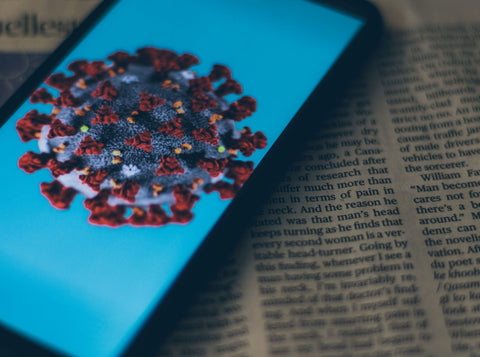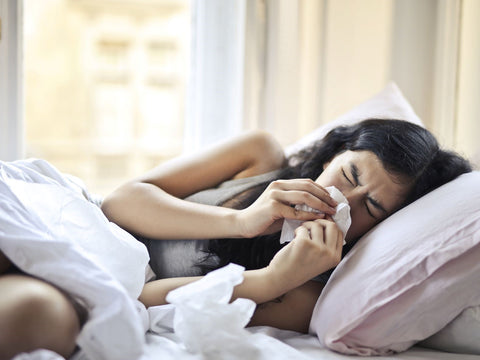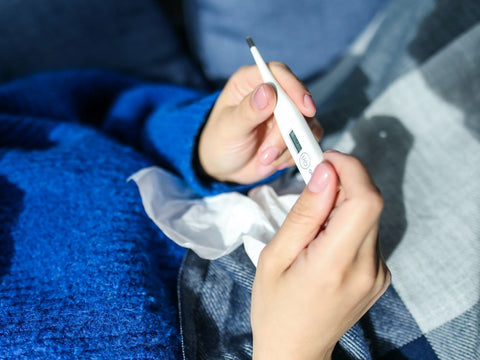What is Monkeypox? Signs, Symptoms and Treatments
Just when we thought we were out of the woods and contagious viruses were a thing of the past, Monkey Pox became the latest headline on our screens.
Occasionally, viruses spill over from infected animals to humans. Monkeypox is a rare disease similar to smallpox caused by the Monkeypox virus. It's found mostly in areas of Africa but has been seen in other areas of the world. Monkeypox was discovered in laboratory monkeys all the way back in 1958. Both old and new world monkeys and apes, a variety of rodents (including rats, mice, squirrels, and prairie dogs) and rabbits are susceptible to infection. But how did it make the leap to humans?
The Monkeypox virus long has been endemic in parts of central and western Africa, but after recent cases were discovered in European and North American nations, public health organizations sounded alerts around the world.
It’s theorised that it was passed on from infected animals, either by being scratched or bitten by the animal or by preparing or eating meat or using products from an infected animal. Monkeypox can spread through close prolonged contact with an infected person and continue like this in it’s infectious nature. This includes coming into contact with skin lesions, or body fluids, sharing clothes or other materials that have been used by an infected person, or inhaling respiratory droplets during prolonged face-to-face contact.
Symptoms
- Fever
- Headache
- Muscle aches and backache
- Swollen lymph nodes
- Chills
- Exhaustion
- A rash that can look like pimples or blisters that appears on the face, inside the mouth, and on other parts of the body, like the hands, feet and chest.
There are no treatments specifically for monkeypox virus infections. However, monkeypox and smallpox viruses are genetically similar, which means that antiviral drugs and vaccines developed to protect against smallpox may be used to prevent and treat Monkeypox virus infections. Monkeypox is usually a self-limited disease with symptoms lasting from two to four weeks. Most people with monkeypox get better on their own without treatment. But here are a few remedies that can help ease you onto the speedy road to recovery!
Infection
How do you kill a virus with natural products? Easy; San-O-Tizer. San-O-Tizer is the ideal anti-viral, anti-bacterial and anti-fungal solution for disinfecting your hands, home and surfaces so that nasties don’t spread. It has been lab tested in European labs and approved for being an effective disinfectant against Poxviridae (including Monkeypox). This product is completely safe and 100% natural. Apply to the designated area by spraying, fogging, or immersing and allow the solution to air-dry.
Temperature
Lowering a mild temperature can be very straightforward…stay cool. Sit in a bath of lukewarm water, wear light pajamas or clothing and drink plenty of cool or room-temperature water.
Headaches & Body Aches
Your generic aspirin will do the trick, but you can also include the following to ease the pain:
- Take magnesium
- Get enough sleep
- Avoid foods high in histamines
- Try a B-Complex vitamin
- Soothe pain with a cold compress
Exhaustion
For a quick pick-me-up, put two drops of peppermint oil on a tissue or handkerchief, hold it to your nose, and breathe deeply. Sip water all day long—at least eight glasses. Don’t wait until you’re thirsty, because your “thirst alarm” isn’t always accurate. Even a little dehydration can make you fatigued. Stretching as often as possible aslo helps oxygenate your body and give you that little boost you need!
Skin
It's only during that healing phase when there's crusting and the skin is regenerating a bit, causing a bout of itching. These Monkeypox lesions may also lead to hypo- or hyper-pigmentation and scarring, and lighter areas where lesions were in people with dark skin. Combat this with San-O-Doc Hypochlorous Solution (HOCl). This solution is safe to use on all skin types and can be sprayed directly onto open wounds, burns, bites, rashes, and eczema to reduce inflammation, promote hydration and disinfect the area from fungal, viral and bacterial infections.
San-O-Doc is also cell-repairing. There are multiple ways in which damaged, dehydrated or non-functional cells are repaired, many of which are initiated or enhanced by the presence of HOCl. One of the first types of cells recruited to a wound site are white blood cells, which secretes HOCl. As a result of the release of HOCl, an increase in the production of cytokines (healing messenger proteins) and growth factors (stimulate cellular division) occurs. Taurine, an amino acid, is also chemically transformed to Taurine Chloramine which is a powerful wound healing factor.
To most, the recent Monkeypox outbreak has echoes of the early days of the COVID-19 pandemic. But scientists say it's not the same at all. Monkeypox is nowhere near as transmissible as COVID-19, nor is it as deadly. They know how it spreads and how it can be stopped. Especially with SanOT’s range of disinfecting, sanitising and healing products. Keep your home stocked!






